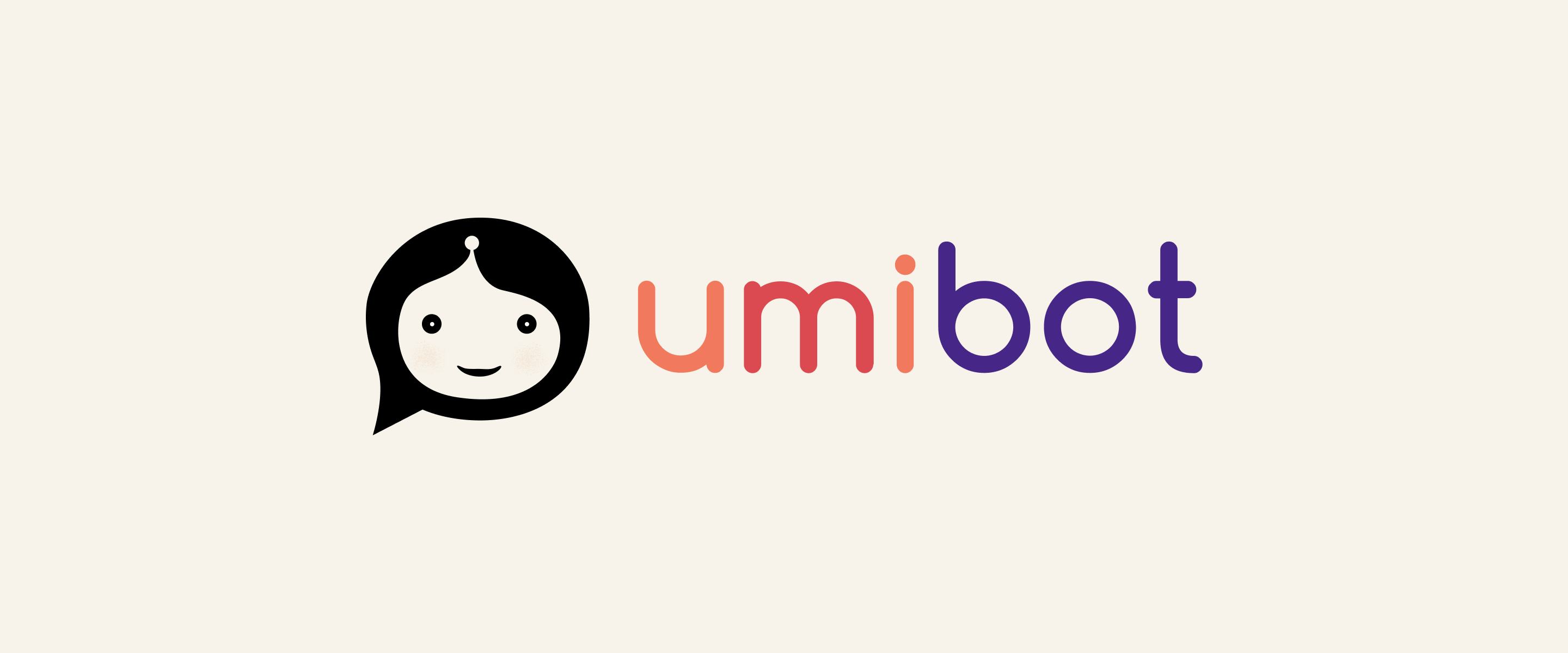Umibot Chatbot

We worked with a team of feminist researchers at RMIT to design and develop a chatbot that provides information, support and general advice to people who have experienced image-based abuse.
The brief
‘Image-based abuse’ refers to the non-consensual taking or sharing of intimate images, as well as threats to share images. Image-based abuse is unfortunately a common experience: in research conducted by RMIT in 2019, 1 in 5 Australian respondents said someone had shared an intimate image of them without their consent (Henry et al, 2021).
A research team at RMIT wanted to investigate how AI-based technologies could be used to help people experiencing image-based abuse.
Funded by an Australian Research Council Future Fellowship, the project aims to investigate the effectiveness and impacts of digital tools in addressing image-based abuse. A key part of this project was an investigation into how a chatbot-based service could be used to help victim-survivors, bystanders and perpetrators of image-based abuse access the information and resources they need.
We worked with RMIT to design and develop the chatbot, and to optimise it over time in line with the results of RMIT’s ongoing research.


What we did
Creating a natural and logical conversation flow
The audience for the chatbot was threefold: it should provide information and resources to those who had experienced image-based abuse, but also their support networks, and even perpetrators. The bot also needed to be able to cater to both adults and minors, as many of the laws surrounding the taking and sharing of intimate images differ depending on age. To cater for these circumstances, we mapped out a series of conversation flows that would segment users by age, role, and finally, topic of interest.
By mapping out these pathways in detail, we were able to determine how many different conversational paths needed to be created, as well as any areas of overlap where content could be repurposed across multiple journeys. This provided us with a strong structural foundation going into the copywriting portion of the project.
Establishing a voice for Umibot
The RMIT team, in collaboration with artist Justine Henry who did the artwork and colour design for Umi, had given significant thought to the branding and identity of their chatbot. Over the course of a series of workshops, we worked closely with the project team to determine the values and goals underpinning Umibot’s brand. The brand personality we ultimately landed on was that of a “trusted advisor”: empathic, factual, and reassuring.
With our brand personality established, we set about developing an appropriate tone of voice for the bot. We wanted Umibot to be approachable and compassionate, whilst maintaining a sense of expertise and authority, to ensure that users felt they could trust the information they were receiving.
As subject matter experts in this field, the RMIT team wrote the bot’s content, so it was important that we establish a strong voice and tone direction to keep the team aligned. To set the direction for the bot’s tone of voice, we created a series of sample utterances to demonstrate how the bot would broach different topics or respond to certain stimuli. The RMIT team was then able to take this sample copy and apply the voice and tone principles to the rest of their content writing.
Working within Amazon Lex did create some limitations for bot content, so to ensure the copy met both development requirements and brand voice principles, we undertook a final copyedit of the conversation flows.
Ensuring a safe space for users of all backgrounds
Given the sensitive nature of the subject matter, it was likely that many of the users engaging with Umibot would be feeling stressed, upset, or concerned for their safety. To ensure the bot was prioritising user wellbeing, we established a list of trigger words which, when typed, would divert the course of the conversation to focus on providing immediate support and resources the user could access. This included words relating to danger, self-harm, and police services. To ensure the bot had understood the user’s intent correctly and not diverted the conversation unnecessarily, we also introduced a series of question checks to verify user intent.
Image-based abuse affects people of all ages, genders, ethnicities, and sexual orientations, and accessibility was a key requirement of the project. We took care to word our responses as inclusively as possible, using non-gendered terms such as “partner” or “spouse”, and implementing accessibility features such a keyboard controls and best-practice colour contrast levels.
The links and resources the bot provides were also designed with inclusivity in mind, with dedicated conversation flows provided for users from Aboriginal and Torres Strait Islander communities, LGBTIQ+ users, sex workers, and users needing interpreting or translation services.
A simple but beautiful site design
Given that the focus of the Umibot website would be the chatbot itself, we kept the UI design clean and simple. The site is made up of only a few pages, and includes a ‘Quick Exit’ button that can be used to navigate away from the site if the user is in an unsafe situation.
The chat window itself was designed to mimic text-based messaging apps, using a rounded chat bubble style and employing different colours for messages sent by the user, and messages sent by Umibot. We also added a slight delay to Umibot’s responses, simulating the “typing” animation found in real-world messaging scenarios. This lends the bot a more personable feel, creating the impression that the bot is giving the user’s comments due consideration before responding.


How we did it
Development using Amazon Lex
We chose Amazon Lex as the development platform for Umibot. We wanted the bot to be available to a wide audience, so it was important that it not be tied to the login requirements of any particular social platform. Due to the privacy requirements of the project and the sensitive nature of the topics being discussed, it was also essential that the bot be hosted in Australia. AWS’s local hosting practice therefore made it the ideal choice of platform. AWS’s ability to integrate with other social platforms, like Facebook or Slack, provided the project with additional flexibility, creating a future-proofed technical solution that could evolve with the changing needs and use cases of the chatbot.
Whilst undertaking discovery and initial brand voice activities, we conducted a proof of concept activity to investigate the structures and functionalities of the Amazon Lex console. AWS provides a number of example bots, and we used these to test and understand how the technology was set up in the back end. This gave us a better understanding of the structure we would need to work within, and we were able to shape our conversation flows to match the requirements of the development platform.
During this phase, we also ran a number of tests to determine the extent to which code hooks could be used to apply customisations to the bot. These code hooks would allow us to aid the bot in selecting relevant responses to a user’s enquiry, helping us to catch any ambiguity in the conversation flow and ensure that Umibot was providing the most relevant responses to user intents.
With so many different conversational pathways available, we made the decision to split the Umibot experience into multiple bot pathways, each dedicated to a particular conversation flow. This prevented the bot from becoming confused or overwhelmed by the number of possible user responses, and helped to segment users into more concrete audience groups.
Using natural language processing to create an authentic conversation
Many chatbots are built around simple tasks and workflows with established metadata the bot can pick up on. For example, booking an appointment. However, due to the complex nature of the conversation flows, Umibot needed to be able to respond to nuanced accounts of a user’s personal experience. This required programmatic content development and a greater degree of NLP training than might otherwise have been required of a more task-oriented chatbot.
To provide the most value to users, the bot needed to be able to understand and respond to particular utterances or phrases, whilst also progressing through an established question-answer workflow.
To facilitate this, the RMIT team created an extensive set of utterances and trained Umibot, employing synonyms and alternative phrasings in order to catch any ambiguity in the user’s articulation of their experience. These utterances became the core dataset that was used to train the bot to listen, understand, and respond to particular commands or phrases.
Solution
Umibot provides essential information and support to people affected by image-based abuse, and does so in a confidential, accessible way. The chatbot is currently being piloted in Australia, and RMIT has plans to continue iterating and improving Umibot over time.
Working on Umibot was a great experience. Not only were the technical and design challenges compelling, but the project contributed to a genuine social good in providing support for people in real need.
Let's work together
Get in touch